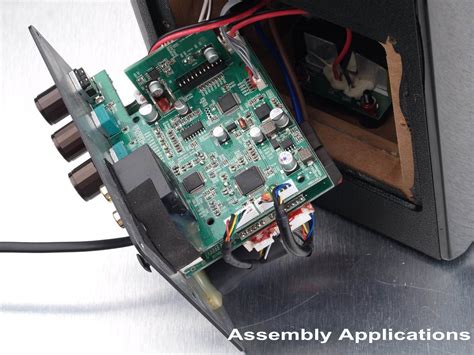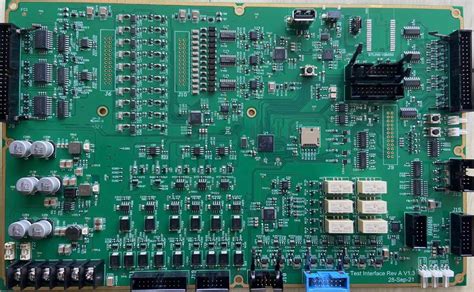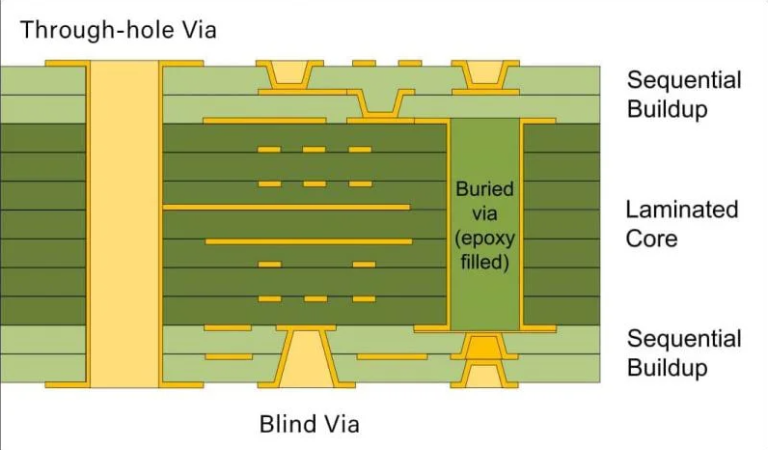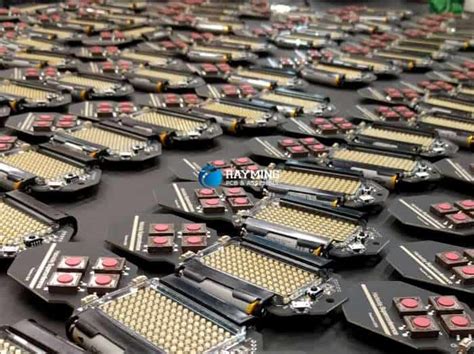Streamlining Success: The Future of Contract Electronic Assembly
Key Takeaways
The contract electronic assembly industry is witnessing significant transformations that are reshaping its operational landscape. Innovations in pcb assembly have streamlined workflows, leading to enhanced efficiency and reduced costs for manufacturers. With the rise of advanced pcba technologies, companies are now capable of producing more complex circuits in shorter time frames. The use of smart tools and automation software not only optimizes production but also minimizes the risk of human error, which has traditionally plagued the industry. Furthermore, seamless collaboration between manufacturers and clients has become critical. By adopting cloud-based platforms and real-time communication tools, stakeholders can ensure that project specifications are met with precision. Importantly, staying informed about key trends such as sustainability initiatives, the integration of Internet of Things (IoT) devices, and advancements in artificial intelligence will play a vital role in navigating future challenges. As the landscape evolves, organizations must remain adaptable and ready to embrace these changes to sustain their competitive edge in the market.
Introduction to Contract Electronic Assembly: A Transformative Overview
The world of contract electronic assembly is evolving rapidly, driven by the need for increased efficiency and quality in manufacturing processes. At the forefront of this transformation is PCB assembly (Printed Circuit Board assembly), a crucial element in the electronic supply chain. Today, companies are not just looking for simple manufacturing solutions; they are seeking PCBA (Printed Circuit Board Assembly) partners that can offer comprehensive services to meet the demands of modern technology. As innovations emerge, manufacturers are embracing automated processes, real-time data analysis, and streamlined communication strategies that significantly enhance production efficiency and accuracy.
Emerging technologies, such as artificial intelligence and machine learning, are enabling precise quality control at every stage of production. By integrating these systems into the pcb assembly workflow, companies can minimize errors and reduce waste. Moreover, advanced software tools facilitate better collaboration between manufacturers and clients, ensuring that project specifications are met with precision.
“Innovation is not just about adopting new technologies; it’s about rethinking how we approach manufacturing.”
The adoption of these innovations significantly impacts lead times and costs, allowing firms to remain competitive in a global market. As we delve further into this transformative landscape, it becomes clear that the future of contract electronic assembly will be shaped by those who leverage these trends effectively while maintaining rigorous standards of quality and reliability.
Innovations Driving Efficiency in Electronic Assembly
The landscape of contract electronic assembly is undergoing a significant transformation, fueled by cutting-edge innovations that drive efficiency in pcb assembly processes. One of the primary advancements includes the incorporation of automation technologies, which enhance production speed and consistency, thereby reducing the likelihood of human error. Furthermore, the adoption of advanced pcba software allows for real-time monitoring and analysis, offering manufacturers insights that enable them to optimize workflows and resource allocation. Another critical innovation is the use of modular assembly lines, allowing for flexibility in production and making it easier to adapt to varying order sizes or specifications. Technologies such as Artificial Intelligence (AI) and Machine Learning (ML) are also being integrated into quality control processes; they can predict potential failures before they occur, ensuring a high standard in product output. These innovations not only streamline operations but also foster closer collaboration between manufacturers and clients, enhancing overall satisfaction with the contract electronic assembly process. As these tools evolve, they will undeniably shape a more efficient future for professionals within the industry, paving the way for sustained growth and success.
Streamlining Processes: Tools and Technologies in the Industry
In the realm of contract electronic assembly, the integration of advanced tools and technologies is essential for improving operations and maximizing efficiency. The adoption of automated PCB assembly processes has revolutionized how manufacturers produce PCBA, allowing for higher precision and faster turnaround times. Automation reduces manual error, which is crucial for maintaining quality standards in electronic components. Furthermore, the use of sophisticated software solutions enables real-time tracking and management of production workflows, facilitating seamless communication between teams. Tools such as Internet of Things (IoT) devices provide critical data analytics, helping companies identify bottlenecks and optimize their resources efficiently. Additionally, incorporating artificial intelligence into the production line can enhance predictive maintenance strategies, proactively addressing issues before they disrupt operations. By embracing these innovative technologies, businesses can ensure their processes are not only streamlined but also adaptable to the evolving demands of the market, ultimately fostering greater collaboration between manufacturers and clients in the dynamic landscape of contract electronic assembly.
Enhancing Collaboration between Manufacturers and Clients
In the rapidly evolving field of contract electronic assembly, effective collaboration between manufacturers and clients is paramount for achieving outstanding results. As companies increasingly leverage PCB assembly and PCBA services, maintaining clear communication is essential to ensure that all parties are aligned on project specifications, deadlines, and quality standards. By embracing innovative digital platforms, manufacturers can facilitate real-time feedback, enabling clients to stay informed about their projects’ progress. This transparency not only enhances trust but also empowers clients to make informed decisions based on accurate information. Additionally, joint planning sessions can be instrumental in understanding the unique needs of each project, fostering a culture of partnership rather than mere transaction. Such collaborative efforts are significant in optimizing production processes and mitigating risks associated with traditional assembly practices. By prioritizing timely engagement and open dialogue, both manufacturers and clients can enhance the quality of work produced and ensure that the final outcomes exceed expectations in an increasingly competitive market. Ultimately, strengthening these relationships is key to unlocking innovation within the contract electronic assembly sector, driving mutual success in future endeavors.
Key Trends Shaping the Future of Contract Electronic Assembly
The contract electronic assembly industry is undergoing significant transformation driven by rapid technological advancements and evolving market demands. One of the most prominent trends is the increasing integration of automated solutions into pcb assembly processes. Automation enhances precision and reduces production time, which is essential for meeting the rising expectations for efficiency and quality. Additionally, the emergence of smart manufacturing techniques allows for real-time monitoring and data analytics, enabling manufacturers to swiftly adapt to changes and optimize pcba outputs.
Another crucial trend is the growing importance of sustainability within the electronic assembly sector. Companies are increasingly focusing on eco-friendly practices, such as minimizing waste and utilizing renewable materials in pcb assembly operations. This not only aligns with global environmental goals but also resonates with consumers who prioritize sustainability in their purchasing decisions.
Moreover, collaboration between manufacturers and clients has become more strategic, with a shift towards long-term partnerships rather than transactional relationships. This fosters a more agile approach to design modifications and production schedules. By embracing transparency and shared goals, both parties can enhance their operational efficiencies within the contract electronic assembly ecosystem.
As innovations unfold, staying attuned to these trends will be pivotal for businesses aiming to thrive in this dynamic landscape, ultimately shaping the future success of contract electronic assembly practices.
Challenges and Solutions in Modern Electronic Assembly Practices
The landscape of contract electronic assembly faces various challenges that can hinder efficiency and productivity. One prominent issue is the complexity of managing pcb assembly processes, which often involve numerous components and intricate designs. This complexity can lead to delays and increased costs if not addressed effectively. Moreover, ensuring high-quality standards across all produced pcba units is also critical; imperfections in any stage can lead to significant setbacks for both manufacturers and their clients.
To tackle these challenges, many companies are adopting advanced technologies that streamline operations, such as automated inspection systems that enhance quality control during the pcb assembly process. These innovations not only reduce the likelihood of defects but also increase throughput, ensuring timely delivery of products. Additionally, fostering strong communication and collaboration between manufacturers and clients is essential. By leveraging digital tools and platforms for real-time updates on production status, stakeholders can make informed decisions quickly, mitigating issues before they escalate.
Furthermore, ongoing training programs for employees involved in pcba can help to maintain high standards of knowledge and skill set appropriate for ever-evolving industry demands. As these solutions continue to be integrated into modern electronic assembly practices, they pave the way for increased efficiency and resilience in an increasingly competitive environment.
Case Studies: Successful Implementations in the Industry
In the evolving landscape of contract electronic assembly (CEA), real-world examples are instrumental in illustrating how companies leverage innovations to optimize their operations. One notable case is that of a mid-sized electronics manufacturer that revamped its PCB assembly processes through the implementation of advanced automation technologies. This transformation not only reduced production time but also minimized errors, resulting in a significant boost in the overall efficiency of their operations. Additionally, the integration of cloud-based platforms allowed for improved communication and alignment between manufacturers and clients, facilitating a more responsive approach to customer needs. Another compelling example involves a global player in PCBA who adopted advanced analytics tools. By harnessing data insights, they successfully predicted demand fluctuations, adjusted their production schedules accordingly, and expertly managed their supply chains. Such strategic moves are not merely anecdotal; they illustrate larger trends within the industry, where companies increasingly recognize the importance of innovation and collaboration as they navigate challenges. These case studies underscore how practical implementations are not just enhancing operational capacities but also setting benchmarks for success in the rapidly changing world of contract electronic assembly.
The Road Ahead: Preparing for Future Developments in Contract Electronic Assembly
As we look toward the future of contract electronic assembly, it’s essential to recognize the pivotal role that advancements in pcb assembly technologies play in shaping industry practices. The continuous evolution of pcba processes not only enhances the speed and accuracy of production but also promotes greater flexibility in response to market demands. Companies are increasingly adopting innovative tools and methodologies that streamline operations, reducing time-to-market and minimizing costs. Furthermore, a stronger emphasis on data integration and analysis enables manufacturers to make informed decisions, leading to higher efficiency across the supply chain. Collaboration between manufacturers and clients is being facilitated by new platforms that provide real-time feedback, fostering a culture of transparency and mutual growth. In navigating these developments, stakeholders must remain adaptable, embracing change as they leverage emerging trends—such as automation and artificial intelligence—that are set to redefine the landscape of contract electronic assembly. To effectively prepare for this dynamic future, businesses will need to invest not only in technology but also in training their workforce, ensuring that all personnel are equipped with the skills necessary to thrive in an ever-evolving industry.
Conclusion
The landscape of contract electronic assembly continues to evolve, characterized by rapid technological advancements and innovative practices that redefine efficiency and collaboration. As companies navigate the complexities of pcb assembly and pcba, they must adapt to emerging trends, integrating sophisticated tools that streamline processes. Enhanced communication between manufacturers and clients fosters a more transparent environment, improving outcomes for all stakeholders involved. Additionally, the focus on sustainability and quality assurance in electronic assembly practices is reshaping industry standards, pushing organizations to prioritize not only speed but also the integrity of their products. By embracing these transformative changes, businesses position themselves for a successful future in a dynamic market where agility and innovation are paramount. As we look ahead, the interplay between technology and collaboration will undoubtedly continue to play a vital role in driving success within the contract electronic assembly sector.
FAQs
What is contract electronic assembly?
Contract electronic assembly refers to the service provided by external companies that handle the manufacturing and assembly of PCBs (Printed Circuit Boards) and other electronic components. This outsourcing allows businesses to focus on their core functions while benefiting from specialized skills and resources.
How does pcb assembly enhance efficiency?
PCB assembly leverages advanced technologies such as automated placement machines and specialized software for quality control. These innovations streamline the production process, reduce errors, and significantly improve turnaround times.
What are key challenges in modern pcba practices?
Challenges include managing supply chain issues, ensuring quality standards, and adapting to rapid technological changes. Companies must remain agile to cater to evolving market demands while maintaining high levels of production efficiency.
How can collaboration improve contract electronic assembly outcomes?
Enhancing collaboration between manufacturers and clients fosters better communication, aligns project goals, and speeds up decision-making processes. This partnership approach leads to innovative solutions that can address specific needs effectively.
What trends should we watch in the future of contract electronic assembly?
Emerging trends include increased automation, the use of artificial intelligence for predictive maintenance, and a heightened focus on sustainability practices within the industry. As these trends evolve, they are likely to reshape how pcb assembly services are delivered.
For more insights and details on pcb assembly, please click here: AndwinPCB







